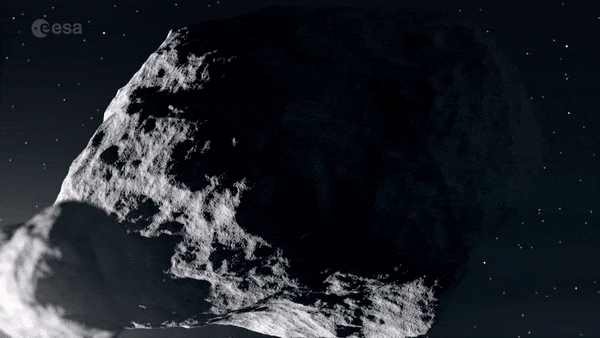
Much of the work on the topic of dust is being done using computer models that make assumptions about the compositions of asteroids. We can see rocky surfaces, we can make assumptions about asteroid structures, but to really understand what they are made of we need to see inside. Luckily, some asteroids – like the often discussed Bennu – have been badly shattered often enough that their surface is a mix of rocks that once used to be on the inside.
The asteroid Didymos is thought to be another one of these rubble pile asteroids, and the European Space Agency is planning to send a pair of missions to this world to first try and move its moon and then to see the outcomes of that attempted push.
One of the confusing aspects about how Didymos is how it is held together. This is a tiny asteroid, and it is spinning around its axis every couple of hours. If Didymos is made of a bunch of boulders, it should have flung itself apart. Researchers, led by Yun Zhang, tried to figure out what could be gluing these boulders together by running a series of computer models to see if the electrostatic forces of dust could do the trick, and you know what? It turns out that if you cake it in enough dust, you can actually glue a pile of boulders into an asteroid.
Personally, I find the science in this paper pretty cool, but the press release we received totally hid the science from the title, focusing instead on who was the last author on the paper: Dr. Brian May. Known for his involvement in a little band called Queen, this researcher at the London Spectroscopic Company added in the creation of the 3D models the work used. It turns out, if you’re famous enough for something unrelated to your research, even a last author can find their way into a press release.
More Information
ESA press release
“Creep stability of the DART/Hera mission target 65803 Didymos: II. The role of cohesion,” Yun Zhang et al., 2021 July 1, Icarus




 Join the Crew!
Join the Crew!
 Escape Velocity Space News
Escape Velocity Space News
0 Comments